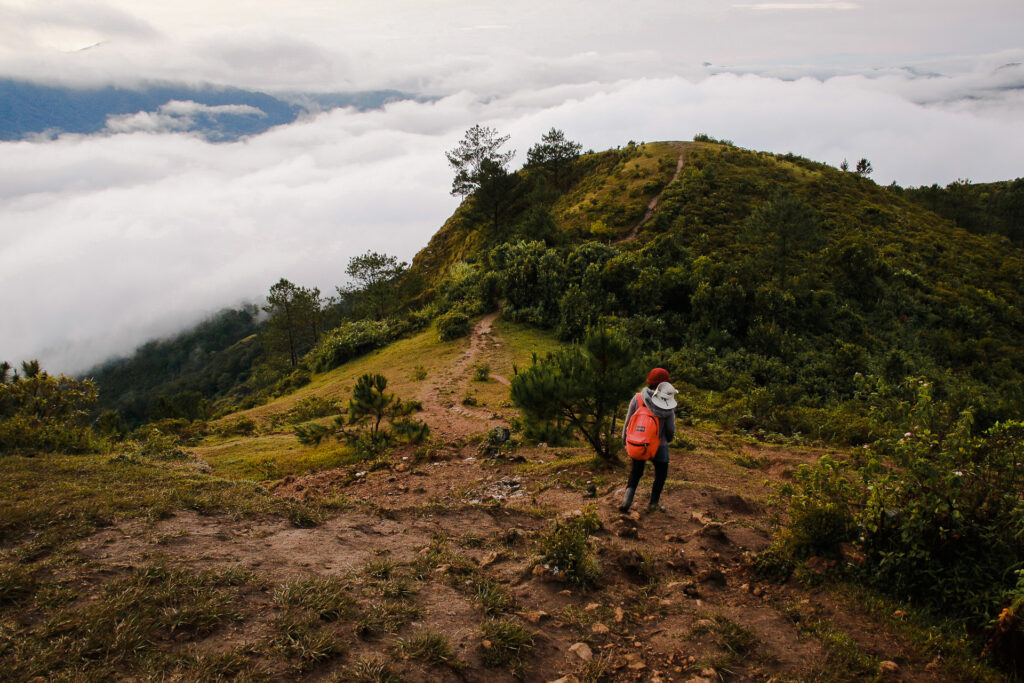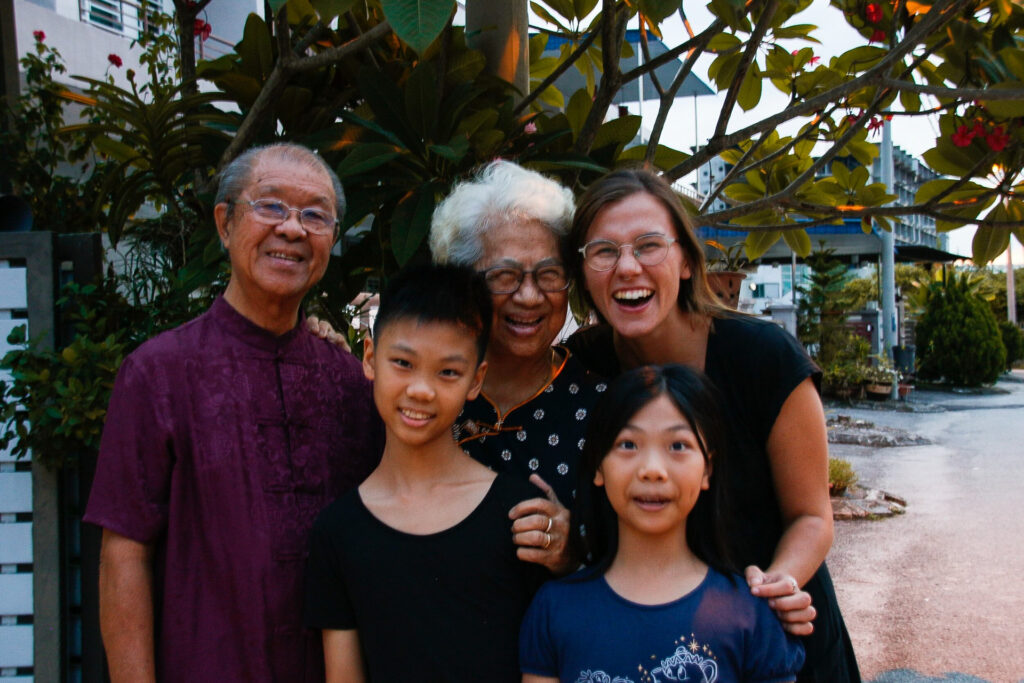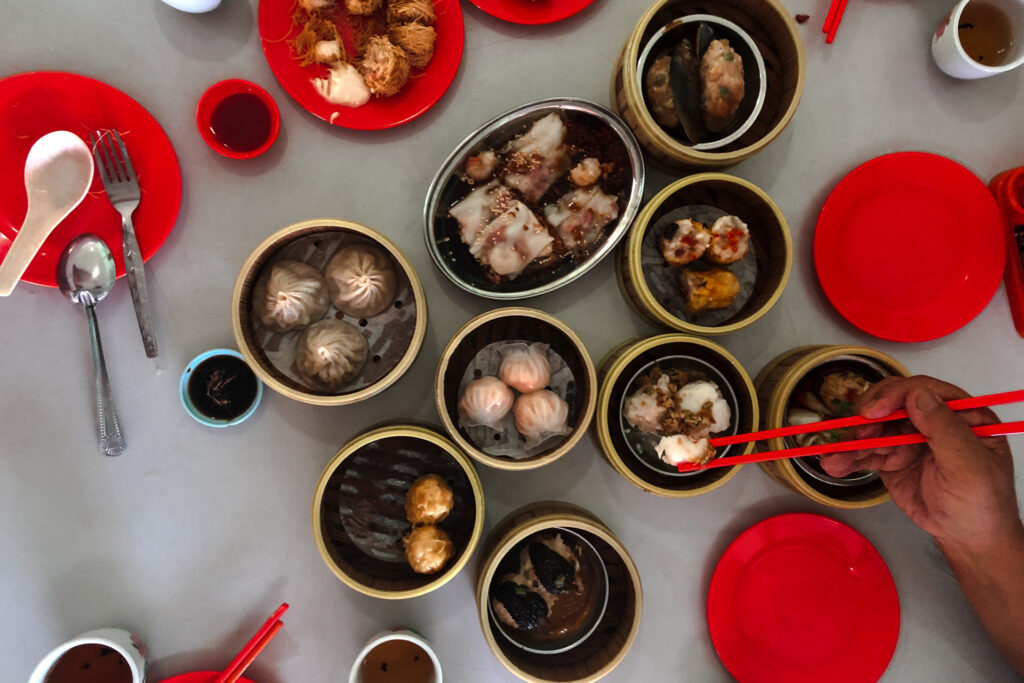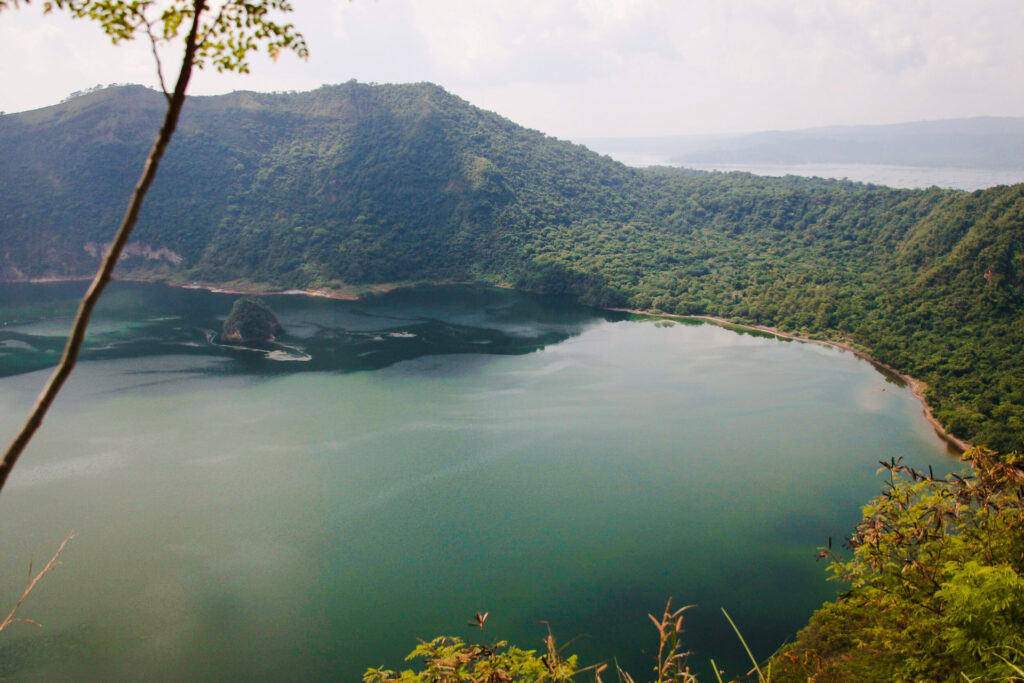They say the rumbling didn’t stop. On land, the small lake-side huts rattled to the rhythm of the earth, the long blue fishing boats still swaying in the waves of the Taal Lake. Without warning, a deafening sound pierced the sky, a column of ash spewing from within the rolling green hills of the island, filling the sky with a cloud the color of stone. It was three o’clock in the afternoon of January 12, 2020, and the Taal Volcano was erupting for the first time in 43 years.
Two months earlier, I’d stood above the crater that has now left over 30,000 people displaced, their homes covered in layers of ash up to my knees. In fact, I’d admired the turquoise water and cavernous canyon, even snapped a selfie.
I’d spent the week prior in an around the Batangas region on the island of Luzon, the largest island of almost 8,000 in the Philippines. I’d been volunteering as part of the Relief Brigade, an organization started by our family friend Paul in honor of his late partner, the beloved Ernie Deomampo. It had been my friend Chun Hao’s idea to take the hike, and always a fan of adventure, I soon found myself winding through the Filipino countryside in the backseat of a friend’s pickup.
“Would you mind stopping at Antonio’s?” Chun Hao had a Singaporean accent and was undeniably handsome. He turned to face me, adjusting the blue bandana he wore around his forehead. I chuckled to myself. All week we’d been stopped by people wanting to take photos with Chun Hao, squealing that he resembled the star of a K-drama, and now here I was, about to hike a volcano with Singapore’s most eligible bachelor.
“My friend started this restaurant!” The car pulled up outside of a large white building with a wraparound porch. Beyond the building, I could see the sweeping landscape, volcano towering in the distance. The smell of coffee and fresh baked bread seemed to radiate from the walls.
We walked to the back of the building, taking in the view. We were standing on a high peak, the indigo waters of the Taal Lake expanding below us, the island volcano emerging beyond the hazy, early morning clouds. In the light of the new sky, everything appeared as if bathed in gold.

An hour later, stuffed with fresh crepes and homemade hot chocolate, Chun Hao and I found ourselves winding down a skinny road in the back of a motorized tricycle, the engine revving and puffing out hot clouds of smoke at every turn. Our driver had a broad face and a scattering of dark stumble on his chin. At the bottom of the hill, he parked the tricycle by a long wooden dock, spit out a red wad of betel seed, and looked up at us.
“I wait right here,” he said, settling back into the tricycle and tipping his hat forward over his eyes. A grunt escaped from beneath the brim.
A short, stout woman with a wide smile and dark hair pulled back in a ponytail quickly and excitedly ushered us over towards the ticket office, which was no more than a short card table on the dock’s edge loaded with stacks of papers. We signed our names, handed over our pesos, and stood by sheepishly as she whistled towards a group of men, all with red stained teeth and the sturdy shoulders of fishermen. One stood up from the group, placed a pair of sunglasses over his dark eyes, and led us towards a long blue boat.


Twenty minutes later, frosted with sea spray and already sweating buckets, Chun Hao and I found ourselves standing at the base of the Philippines second most active volcano. Contrary to the photos seen circulating around the internet of smoke-filled skies and bubbling lava, the island was peaceful, green, and smelled vaguely of sulfur and wildflowers. Furthermore, there was a Starbucks.
“Want a coffee?” Chun Hao gave me a nudge, and I chucked upon a further look at the sign. Instead of “Starbucks,” the green, painted letters spelled out “Staalbucks.”
The beginning of the hike was surprisingly flat, a game of roulette as Chun Hao and I dodged fresh cow pies, swarming with flies in the heat. After a while, and without warning, the path turned quickly uphill, our breaths becoming more ragged as we pushed on up the wide dirt path, tumbling over roots and nearly running head first into a small group of horses, each carrying three large bags of rice on its back. Following closely behind the pack was a small woman, her face shaded by a wide-brimmed straw hat and her neck covered with a lightweight scarf, leaving only her eyes visible. She shouted something at the horses in Tagalog, and they disappeared behind a bend in the road.


We stopped momentarily, wiping the sweat from our foreheads. Chun Hao bent at the waist, rising again and stretching out each leg. He squatted, tugging at each of his pants legs in the process.
“And I thought Singaporeans were used to the heat!” I said. He continued his dance, and I laughed out loud as he shimmied around, cooling off in his self-created breeze.
“Not like this!” He laughed. “And I definitely wore the wrong pants!” Composing himself, he readjusted his blue bandana and continued on. I followed close behind.
A while later, the trees parted above our heads, revealing blue sky and winding trails of red earth leading up to the mountaintop. The path twisted up the mountain in almost a geometric design, the mounds of earth all emitting clouds of white steam, warming your ankles as you passed by. Chun Hao stopped, speechless.
“It’s amazing!” His eyes were wide, his awe almost disguising the twinge of fear that existed at the thought of continuing up the smoking mountain. With a sudden burst of childlike energy, he took off down the path, bounding to the opposite side and squatting near a vent in the ground, white steam billowing around him like clouds of fog. I skipped up along beside him, climbing higher on a mound of earth and spreading my arms wide towards the scorching sun above us. Chun Hao laughed and snapped my photo, and I quickly draw out my own camera and captured him back, his bandana a speck of blue in the field of green and red.


The last stretch was the hardest. With nothing left to shade us from the powerful rays of the sun rising higher with every moment, Chun Hao and I pushed on through a blazing heat, sun on our backs, steam on our ankles. Finally we reached the top, victorious and sweatier than we’d ever been.
“Cheers!” Chun Hao handed me a gatorade and tapped his against my own. I tilted my head back, and like I hadn’t had a drink in days, chugged the bottle in one long sip. Nearby, the woman who had sold us the drinks laughed quietly. She was older, maybe my grandmother’s age, with paper-thin skin and deep wrinkles around her eyes. She had probably hiked this summit thousands of times.
Turning, we hiked down the short, flat path to the craters edge. You could smell it before you saw it, waves of sulfuric steam rising from the depths of the earth. Chun Hao gripped the wooden fence with both hands, carefully leaning over the edge to see as far as possible.
“Wow.” He pulled back, both feet planted firmly on the ground. “I’ve never seen anything like it.”
I hadn’t either. From where we stood, the crater could have been one hundred, one thousand, ten thousand feet deep. The water inside was a brilliant turquoise, the surrounding cliffs speckled with green trees and ending in sandy beaches. In the center of the crater sat a small island.

“Want to move there with me?” I joked, pointing at the island.
“I could never,” he shuddered at the thought. “I could never live within 100 miles of this place. I can only imagine what would happen if this thing erupted.”
At that time, standing on the edge of a breathtaking volcanic crater, that’s all it was–a musing, a possibility neither I nor Chun Hao ever thought we would live to see. But, not even two months later, that image was part of every headline.
“The volcano in Lake Taal is erupting.” Paul’s message was short and to the point. Before long, the other members of the Relief Brigade started weighing in, asking what they could do, where we could donate, whether our contacts in Batangas were safe. My phone beeped. The message was from Chun Hao.
“We were so close…” His shock and slow registration of the circumstances mirrored my own. As hard as I could, my mind couldn’t conjure up an image of the lush Taal Volcano covering everything in its wake in a layer of hot ash. Even more, I couldn’t wrap my head around having stood only feet above that site only weeks beforehand.
My imagination wasn’t useful for very long, as every news outlet soon had coverage of the devastating events in the Philippines. The smoke-filled sky, hot with red embers and streams of lava, the once green countryside, now a barren, dystopian wasteland of ash-covered buildings and trees that more closely resembled the pilings left after a fire. What I’d seen–the sparkling blue waters, the golden morning clouds, the blue boats swaying in the soft waves of the lake–were gone indefinitely.

Our friends from Batangas are safe for now, staying in evacuation shelters in the north of Luzon. Many people weren’t so lucky. The eruption has left over 10,000 people displaced, over 800 dead. I think of the woman in the straw hat, our driver with the stubbled chin, the lady with the wrinkles by her eyes. Their fates will forever remain unknown to me.
I feel grateful to have experienced a place so magnificent before I no longer had the chance. I suppose that is the truth of traveling, that our lives are temporary, our world is temporary, and we should seek to explore all we can, while we can.
Most of all I am grateful for life. For my own life, for my friends lives, for the lives of those that will overcome this tragedy. It is them who remember the beauty of this place, and it is them who will one day restore it.
Every person we passed that day had a life in that place, a life now forever changed, a home forever gone. I can only hope that some day people can once again return to this place they call home.

LOOKING FOR MORE STORIES?



Looking for more? Click here to find all travel stories from Broken Boots Travel.
Love stories? Subscribe to my newsletter to get my latest updates delivered straight to your inbox every month. One email a month + no spam? Sign me up!
Virginia Taylor (Ginna) is a travel writer and photographer exploring the world until her boots wear through. She’s currently on a mission to explore all 32 departments of Colombia, though she formerly called the Middle East home. Want to know more? Visit the About Page.
